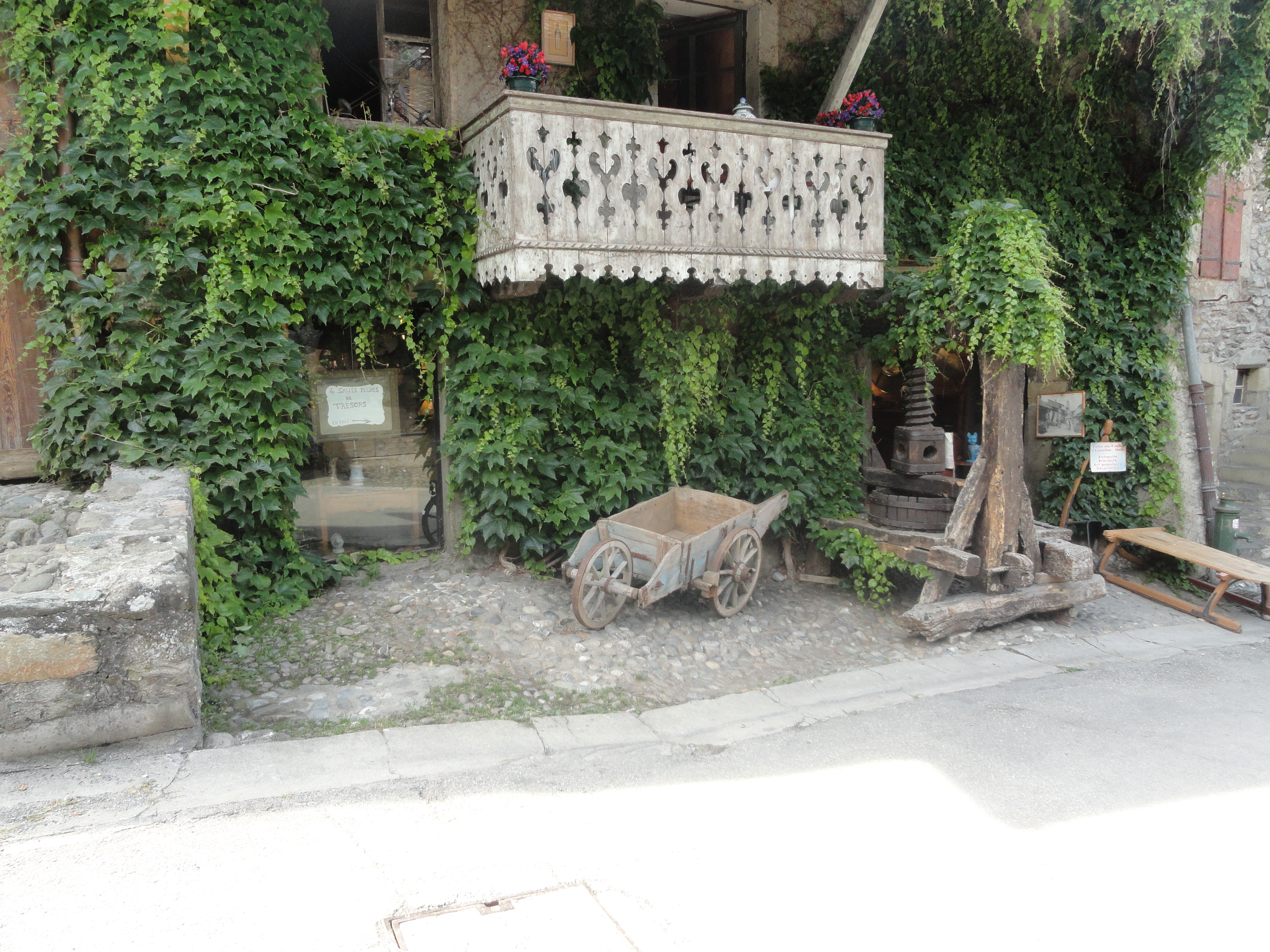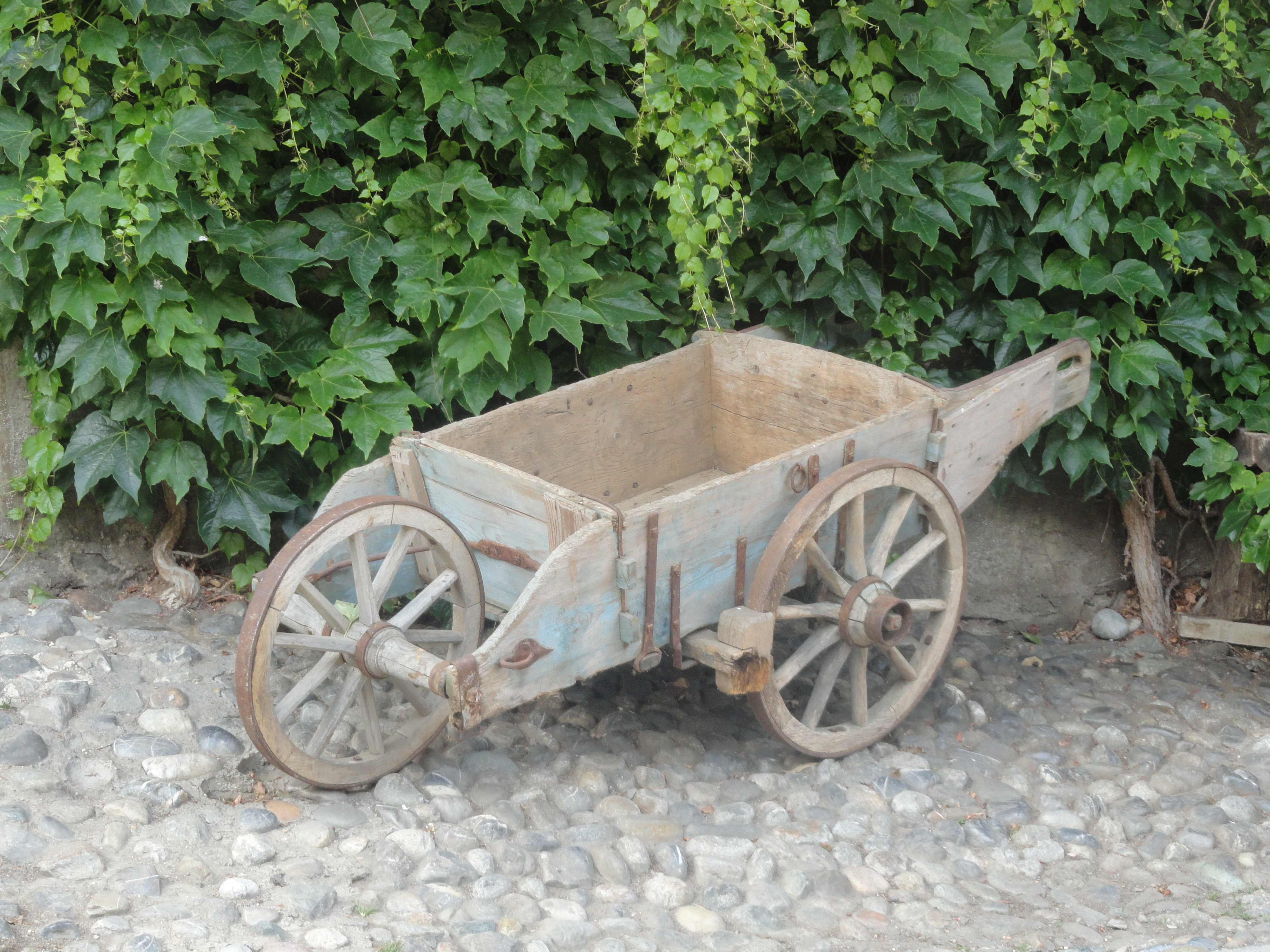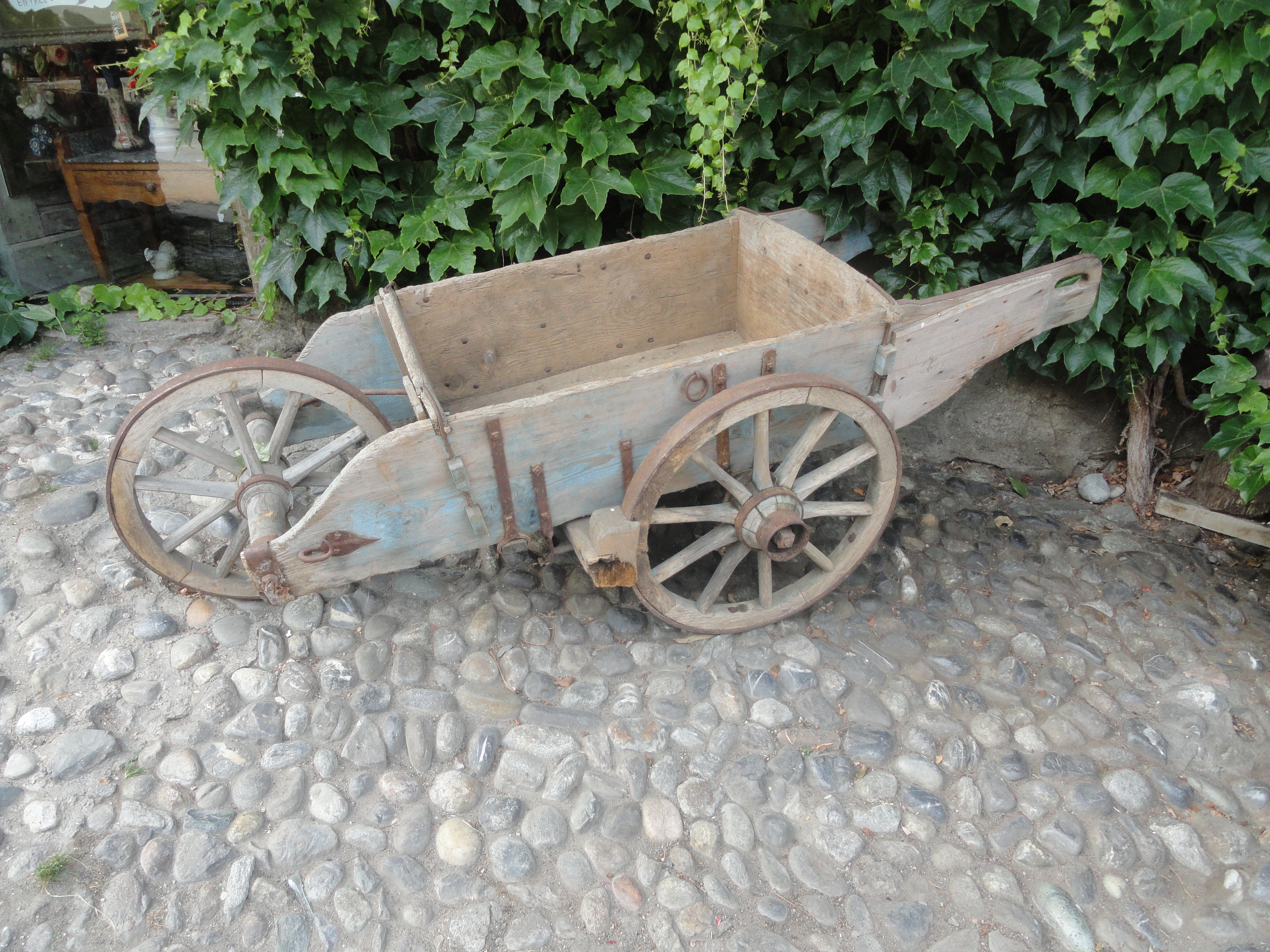


I don't know how old it is, but if I were pressed to guess I would say 18th century. I hope it's older, but I have no idea. With the wheels as they are, it could have been pushed on three wheels if it was very full, but lifted and scooted along quickly if it were empty.
More info, maybe, in general:
Here's a page called "hooping wheels," on "The Countryside Museum" site: Hooping Wheels
"In modern times, wheelwrights continue to make and repair a wide variety of wheels, including those made from wood and banded by iron tyres." (source)
No comments:
Post a Comment